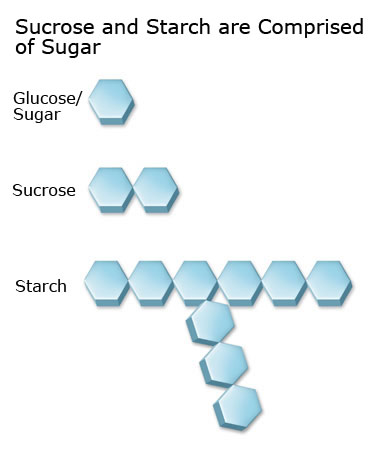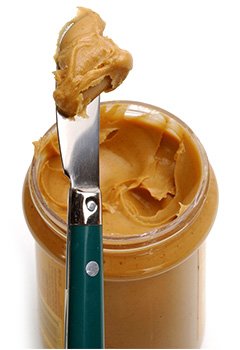42 reading food labels diabetes
Understanding food labels fact sheet - NDSS Food labels will typically include a nutrition information panel, list of ingredients, the 'use by' or 'best before' date and identify potential food allergens and additives. Food labels also tell you the amount of carbohydrates (carbs) you eat and drink. This can help you manage your blood glucose levels. Decoding Diabetes: How to Read Nutrition Labels | Accu-Chek The calories in the foods you eat are made up of fat, protein, and carbohydrates. Nutrition labels are typically made based on the assumption that you have a daily diet of 2,000 calories (kilocalories). Some labels will have a footnote that expand on this concept, providing numbers for both 2,000 and 2,500-calorie (kilocalorie) diets. Nutrients.
How to Read Food Labels When You Have Type 2 Diabetes Quick Tip: When you see sugar-free on a label it means less than 0.5 grams of sugar per serving. No sugar added doesn't mean low or no-carb. A lot of food labels say "no sugar added" but these foods might have tons of carbs. No sugar added simply means no sugar was added during processing or packaging. Sugar alcohols have hidden carbs.

Reading food labels diabetes
Reading Food Labels | ADA Reading labels can help you find these hidden sources and compare the sodium in different foods. Whether you have diabetes or not, 2300 milligrams (mg) or less per day is the general recommendation. If you have high blood pressure, talk with your health care team to find out the best goal for you. List of ingredients PDF What Can I eat? - American Diabetes Association list of everything that is in the food. They are listed by the highest amount to the least. If the first word in the list is sugar, then there is more sugar in the food than anything else. Reading Food Labels Food labels can help you choose what foods to eat. Use the labels at right to find the best choice. 1-800-DIABETES (1-800-342-2383) www ... PDF Label reading basics for diabetes - Veterans Affairs Label Reading Basics for Diabetes Nutrition and Food Services (05/2020) Serving Size • The serving size is the portion size used for all the values on the label. • Different foods have different serving sizes. • The serving size on this label is 2/3 cup. Servings per Container • Indicates the number of
Reading food labels diabetes. How to read food labels if I have diabetes or prediabetes? Knowing how to read food labels is a very useful skill to improve your eating and better manage or help to prevent the progression of diabetes. There are three main things on the food labels to look out for: nutrition information panel, ingredient list, and Healthier Choice Symbols. 1. Nutrition information panel (NIP) Reading food labels & nutrition panel - Diabetes Queensland Reading food labels When choosing packaged food, choose products with: lower energy (kilojoules) if you are trying to lose weight lower total and saturated fat lower sugar lower sodium higher fibre Every food label tells a story and the Nutrition Information Panel simply gives you the facts. PDF TO CARE 4 YOURSELF READING A NUTRITION FACTS LABEL - novoMEDLINK Reading the label can help you compare the amount of sodium in different foods so that you can choose lower-sodium options. Talk with your diabetes care team about what to include in your meal plan. Reading a Nutrition Facts label Reference: 1. American Diabetes Association. Standards of medical care in diabetes—2019. Food Labels | CDC If you eat the whole thing, you are eating 8 times the amount of calories, carbs, fat, etc., shown on the label. Total Carbohydrate shows you types of carbs in the food, including sugar and fiber. Choose foods with more fiber, vitamins, and minerals. Choose foods with lower calories, saturated fat, sodium, and added sugars. Avoid trans fat.
Reading Food Labels | ADA - American Diabetes Association The Nutrition Facts labels on foods are really the key to making the best choices. We'll cover the basics so that these labels make shopping easier for you. You've heard it all. From carb-free to low-carb, to whole and empty carbs, it's hard to know what it all means. Blood sugar highs and lows aren't always easy to understand. PDF Label Reading Basics for Diabetes - Veterans Affairs This food has 300 mg of sodium per ½ cup serving. It is suggested to limit salt intake to 1500 mg per day when you have diabetes. With pre-diabetes, your sodium intake should still be monitored. The goal is less than 2300 mg per day. A good first step is to not have a salt shaker at home. Total Fat The area on the label describing Reading Food Labels When You Have Diabetes | Kaiser Permanente Start with the "% Daily Value" column on the food label. A food is considered low in a specific nutrient (such as fat, saturated fat, carbohydrate, or sodium) if it has 5% or less of the daily value. A food is considered high in that nutrient if it has 20% or more of the daily value. Watch out for health claims on food labels. Reading Food Labels When You Have Diabetes | Cigna Start with the "% Daily Value" column on the food label. A food is considered low in a specific nutrient (such as fat, saturated fat, carbohydrate, or sodium) if it has 5% or less of the daily value. A food is considered high in that nutrient if it has 20% or more of the daily value. Watch out for health claims on food labels.
Reading food labels: Tips if you have diabetes - Mayo Clinic Food labels can be an essential tool for diabetes meal planning. Here's what to look for when comparing food labels. By Mayo Clinic Staff When you live with diabetes, your diet is a vital part of your treatment plan. Of course, you know what you're eating — a turkey sandwich, a glass of skim milk, a sugar-free fudge pop. Reading Food Labels, The Most Basic Tool in Diabetes Management So if you have diabetes, pay attention to the amount and type of fat when reading food labels. Sodium Sodium is another parameter when reading food labels. Although sodium or sugar has no effect on blood sugar levels, increasing the amount of sodium increases the risk of heart problems. Some tips to help you with reading food labels Understanding food labels | Diabetes UK Check the ingredients list - if syrup, invert syrup, cane sugar, molasses or anything ending in 'ose' is within the first three ingredients, this suggests the food contains more added sugar. Choose an alternative if possible, or be mindful of the portion you eat. Check the fibre content on the back of pack label. Making Sense of Food Labels | ADA - American Diabetes Association As of January 2021, labels must include added sugar to help you know the difference between sugar that occurs naturally in the food (like yogurt or fruit) and sugar that was added during processing (like in cookies, candy and soda). Many labels have already made the change. Learn more about sugar and the three main types of carbohydrates.
Reading Food Labels When You Have Diabetes - WebMD Talk to your doctor or your diabetes educator about how to adjust the % Daily Values on labels for your diet. In general, when it comes to fat, saturated fat , cholesterol, and sodium, choose foods...
Reading labels | Diabetes UK Key points Always look at the 'total carbohydrate' on the label when carb counting. This will make sure you are counting both the complex (starchy) and simple (sugary) carbs in your food. Both will raise your blood glucose (blood sugar) levels, and need to be matched with insulin.
How to Read the New Food Label All food products should have the new label by January 2021. It's essential for people with diabetes to read labels and understand what's in the food you eat. The Nutrition Facts label gives you information to compare products and decide what's right for you. When reading the Nutrition Facts label, start at the top with information about servings.
Reading food labels: Tips if you have diabetes - Drugs.com Nutrients and Daily Value: The label must list the amounts of total fat, saturated fat, trans fat, cholesterol, sodium, total carbohydrate, dietary fiber, sugars, protein, vitamin D, calcium, iron and potassium that are in one serving. The Daily Value (DV) tells you how close you are to meeting your daily requirements for each nutrient.
How to Read Food Labels | mySugr / Living with Diabetes / How to Read Food Labels; Eating the right foods helps you stay healthy and manage your blood sugar. Reading food labels gives you a better understanding of what's in your food — making it easier to make healthy choices. If you're not paying attention to food labels, you're not getting all the details on your food.
Reading food labels: Tips if you have diabetes - Augusta Health When you live with diabetes, your diet is a vital part of your treatment plan. Of course, you know what you're eating — a turkey sandwich, a glass of skim milk, a sugar-free fudge pop. But do you pay attention to the details, such as calories, total carbohydrates, fiber, fat, salt and sugar? Reading food labels can help you make the best choices.
Diabetes Food Label Reading: Quick Tips to Shop Smarter Stick to products that contain a maximum of 10 ingredients, 5 is even better. It's also good to understand that anything labeled "sugar free" can technically still have up to 0.5 grams of sugar per serving, so it's not always as straightforward as it seems. "Sugar free" and "no added sugar" does not mean carb free.
Reading Food Labels When You Have Diabetes | Cigna Start with the "% Daily Value" column on the food label. A food is considered low in a specific nutrient (such as fat, saturated fat, carbohydrate, or sodium) if it has 5% or less of the daily value. A food is considered high in that nutrient if it has 20% or more of the daily value. Watch out for health claims on food labels.





Post a Comment for "42 reading food labels diabetes"